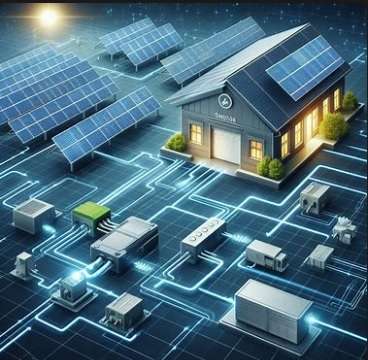The Department for Work and Pensions (DWP) is making a one-off Cost of Living Payment this month, providing vital support to many households. While this payment offers immediate relief, have you considered how it could be leveraged for a more lasting impact on your household finances? Investing this money into a small solar installation could transform it into a long-term cost-of-living saving, insulating you from rising energy bills for years to come.
Small Solar: A Cost-Effective Path to Lower Bills
Even a modest solar setup can be remarkably cost-effective. A well-chosen small system can significantly reduce your energy bill, potentially by around 60% for the power it directly supplies. This seemingly small reduction adds up significantly over the years, especially as energy prices inevitably climb. Imagine having hundreds, or even thousands, of pounds freed up annually that would otherwise go towards electricity, allowing you to allocate those funds to other life essentials or simply enjoy greater financial peace of mind.
Powering Up with Micro Inverters: An Accessible Option
Within the budget of a typical Cost of Living Payment, you could realistically acquire a system featuring single or dual solar panels paired with microinverters, offering around 800W of power. This approach keeps the initial outlay far more manageable than a larger 2000W four-panel system, which, while offering greater generation, substantially increases the upfront cost. The key here is achieving significant cost-cutting measures without breaking the bank.
Simple Installation: Go Ground Mounted and Avoid Planning Hassles
One of the major advantages of these smaller systems is their straightforward installation. You can often opt for a ground-mounted system, which typically does not require planning permission for residential properties in the UK, provided it meets certain size and location criteria (e.g., not exceeding a certain height or being too close to a boundary). This simplicity means less red tape and a quicker path to generating your own electricity.

Minimal Wiring & AC Simplicity
These microinverter-based systems boast incredibly minimal wiring requirements, making them ideal for DIY enthusiasts or those seeking a simpler installation. The system operates as an AC (Alternating Current) system from the point of generation because the microinverter is mounted directly to the solar panel (or between two panels). This converts the DC (Direct Current) power from the panel into usable AC electricity right at the source.
The beauty of this design is its “plug-and-play” nature. A single AC cable is wired from the panels/inverter to a special plug, which then connects directly into your home’s existing electrical system. This provides a constant supply of solar power directly to your appliances, reducing the amount of electricity you pull from the grid.
For reference, a standard solar panel weighs around 25kg, and a microinverter typically weighs approximately 4kg, making them manageable for installation. RenewSolar is dedicated to providing key information regarding wiring solar into a property, ensuring you understand the necessary standards and safety requirements for connecting to your home’s electrical system legally and safely. Refer to our website information and forum for details.
The Benefits of Microinverters:
- Optimized Performance: Each panel operates independently, meaning shading on one panel won’t significantly impact the output of the others. This is a huge advantage over string inverters where a single shaded panel can reduce the output of the entire array.
- Greater Reliability: With multiple small inverters, if one fails, the rest of the system continues to produce power, minimising downtime.
- Easier Expansion: You can easily add more panels and microinverters later if your budget allows or your energy needs grow. but keep in mind they are not cost effective at a larger scale.
- Enhanced Safety: DC power is converted to AC at the panel level, eliminating high-voltage DC wiring runs, which can be a safety concern with string inverters.
- Detailed Monitoring: Many microinverter systems offer panel-level monitoring, allowing you to see the individual performance of each panel via an app.
The Drawbacks of Microinverters:
- Higher Upfront Cost per Watt: Generally, microinverters can be more expensive per watt than a single central string inverter for larger systems. However, for smaller systems like the 800W example, the difference is often less significant.
- Outdoor Mounting: Being mounted under the panels, they are exposed to environmental elements, though they are designed to withstand these conditions.
- No Battery Storage (Typically): Crucially, microinverters are grid-tied inverters and generally do not offer integrated battery storage capabilities. This means your savings are primarily based on directly using the power you produce when it’s generated. Any excess power that your home doesn’t immediately use is exported to the grid. While you can get paid for this export, it’s typically at a lower rate than what you pay for grid electricity, meaning that without a battery, you won’t benefit from storing excess solar for evening use.
In conclusion, a small microinverter-based solar installation, potentially funded by a DWP Cost of Living Payment, offers a tangible and immediate step towards energy independence and long-term financial relief. It’s a pragmatic way to invest in your future, transforming a one-off payment into a lasting source of savings.

No responses yet